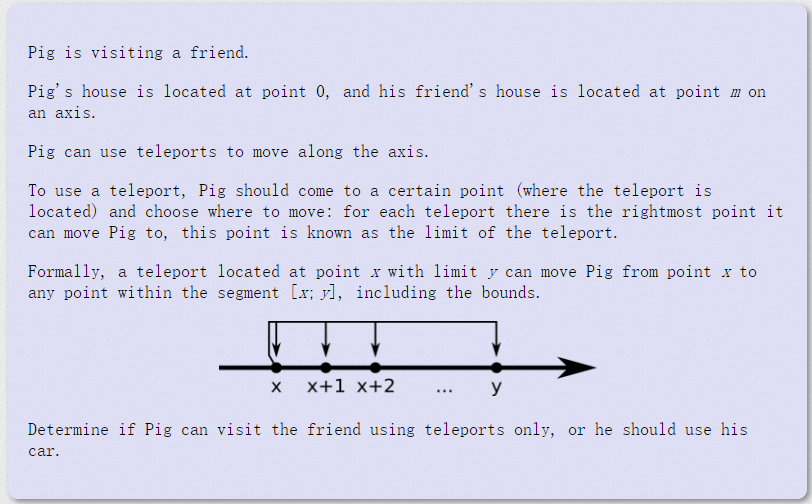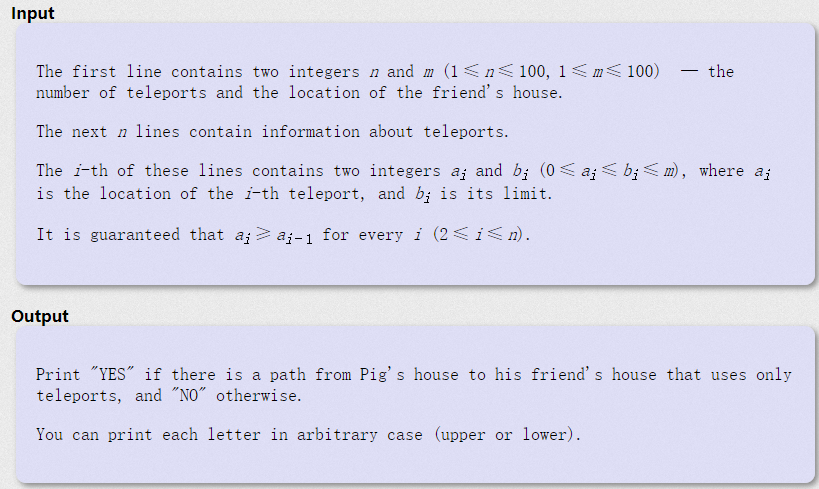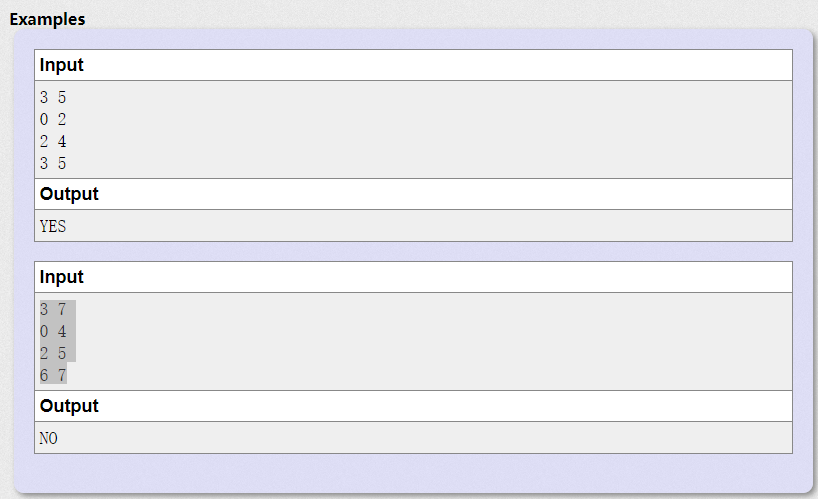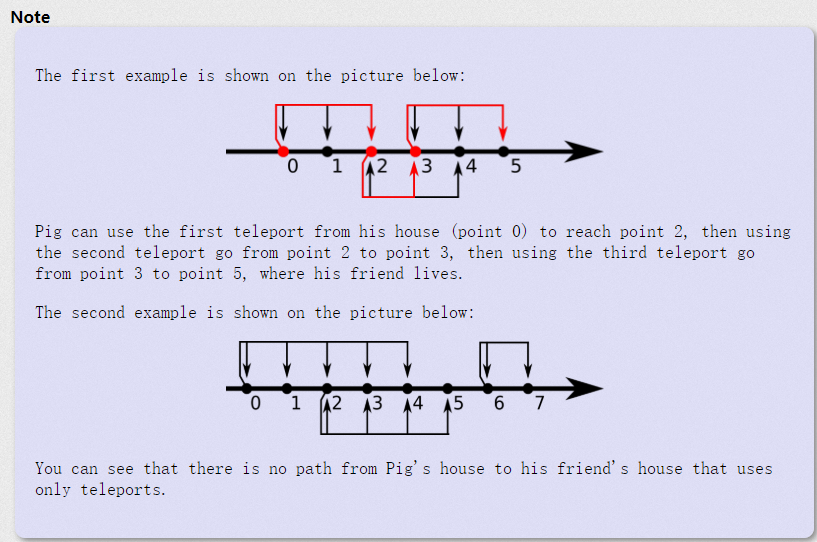Title Link: CodeForces 902A Visiting a Friend



The first time I think about it, as long as 0~m has been visited, the second group of samples have not been used, WA
The second time, as long as 0~m has been visited and the left end of each interval is between the previous interval, wrong answer on test 3
I didn't understand QAQ
Make a list of everything
#include<cstdio> #include<iostream> #include<string> #include<cstring> using namespace std; struct point { int st; //Left end point int en; //Right endpoint }p[110]; int main() { int n,m; scanf("%d%d",&n,&m); for(int i=1;i<=n;i++) scanf("%d%d",&p[i].st,&p[i].en); if(p[1].st!=0) //First, if you don't start from 0, No { printf("No\n"); return 0; } else { if(p[1].en>=m) //The first one starts from 0 and is greater than or equal to m, directly Yes { printf("Yes\n"); return 0; } } bool flag=false; for(int i=2;i<=n;i++) { if(p[i].st>p[i-1].en) //If No. 5 and No. 7 in the figure above occur, it is not possible to directly determine whether they are correct. Exit the cycle and give it to flag for judgment break; if(p[i].en<p[i-1].en) //If No. 1 in the figure above occurs, update the right endpoint; 2, 3, 4 do not need to be updated p[i].en = p[i-1].en; if(p[i].en>=m) { flag = true; break; } } if(flag) printf("Yes\n"); else printf("No\n"); return 0; }
After understanding the above ideas, let's see the solution again: initialize x as 0, representing the farthest distance that can be transmitted, and then if x is > = the distance of the last transmission point, it means that the pig can continuously use the transmission and update the maximum transmission distance of X. If x ends up > = m, you can visit successfully.
#include<bits/stdc++.h> using namespace std; int main() { int n,m,a,b,x; while(cin>>n>>m) { x=0; for(int i=0; i<n; i++) { cin>>a>>b; if(x>=a) ///The limit of each transmission should be > = the last transmission location x=max(x,b);///Update Max distance } printf("%s\n",x>=m?"YES":"NO"); ///If the last transmission distance is > = m, it is OK } return 0; }